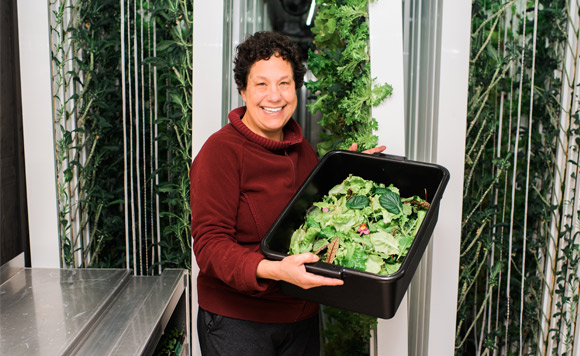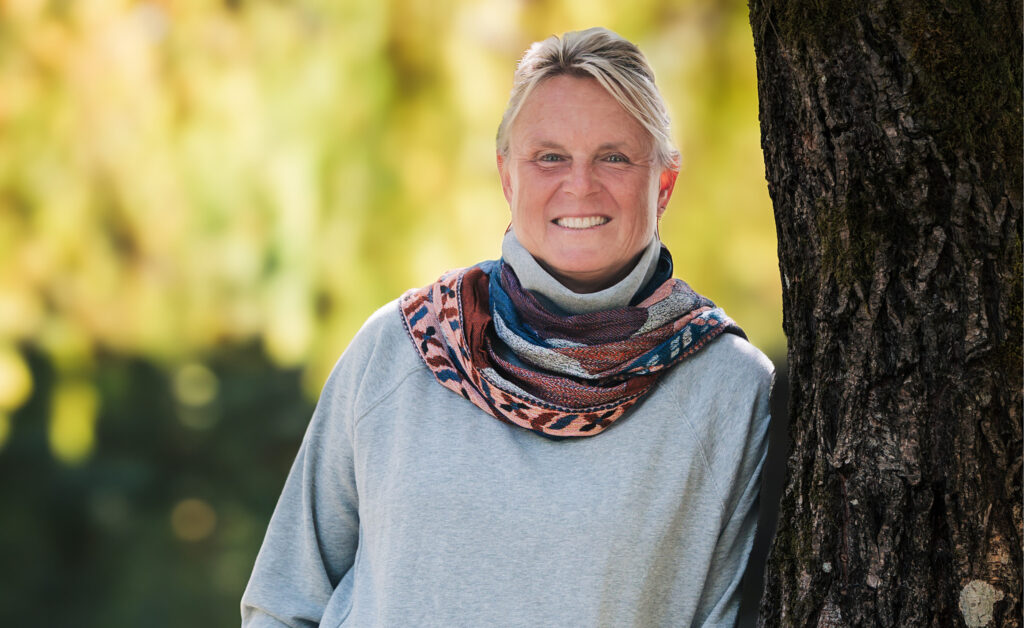by Jesse Holth –
Many years ago living on the Saanich Peninsula required people to draw their sustenance directly from the land upon which they lived. While most of us today rely on grocery markets and at best tend to backyard gardens, there are still those in our community for whom living off the land is a way of life. This is the ninth in a Seaside series featuring local community members who all share the same passion for the land and love of what they do.
Respect for the land can take many forms. For Tamara Knott of Bright Greens Canada, on West Saanich Road in Saanichton, it meant using an innovative new technology. With 90% less water than traditional farming, she can grow 150 pounds of produce a week – all inside two shipping containers.
“I have two farms and they’re each 40 by 10 feet,” she says. That’s the equivalent of one-and-a-half acres of land. After doing some research, Tamara and her husband decided to use this method to grow a variety of greens. From lettuce to kale, from sorrel to chard, they wanted to give the community a chance to buy local throughout the year. “The opportunity to grow fresh produce year-round was of great interest to me,” says Tamara. “In 2017, Canada imported 191,914 metric tons of lettuce – almost $42 million – and that’s just lettuce!” Tamara explains that by the time this produce arrives, it’s no longer fresh. “Most of it gets wasted,” she says, “and they’re all coming in with a lot of plastic packaging.” The produce that does make it onto the shelves is extremely poor quality. “It’s just awful,” says Tamara, “and what a staggering waste of fuel and packaging and water.” She knew there had to be a better way to get fresh, premium produce to the Victoria area.
Growing in shipping containers is a trend on the rise – and for good reason. “I don’t need to use any chemical pesticides or herbicides,” says Tamara. “And any imperfect leaves when I’m harvesting go to the chickens, so there’s no waste.” Besides using fewer resources like water, this method is also safer when it comes to food-borne illness. The water is UV filtered, which means no E. coli, salmonella or other pathogens. Tamara would love to see this kind of farming take hold across the country, so we can support our needs for fresh food all year round. “Canada is way behind on this,” she says, noting the technology is increasing in popularity all over the world. “Farming in this way makes tremendous sense – and it saves soil for what really needs to be grown in the ground, like root crops.”
Most of the patrons at Bright Greens are actually chefs from restaurants around town. “Many of my chefs – and customers, too – use reusable containers, so we’re cutting way back on packaging.” Tamara and her husband have been farming this way for about three-and-a-half years. “We’re quite an effective team, he and I.” But she says there was a pretty steep learning curve. “Learning how to become a farmer and a business person at the same time – that was a challenge.” They had to figure out everything from scratch: how to harvest, how to deliver, how to make contact with the different chefs and anticipate what their needs were going to be. “Our solid first year was nothing but questions, analyzing what we were doing, what we could change and do better.” She’s grateful that most of the business is now repeat customers – people love the produce from Bright Greens.
Tamara keeps an eye on new trends, too. For example, they’ve started growing a new crop called red shiso. Commonly known as Japanese basil, you can get a red and green variety of this leafy green. “We started to grow a bit of it this year for the more experimental chefs in town,” she says. It’s something that isn’t always available – according to Tamara, it’s not what you’d necessarily see on the grocery store shelf. “The red one is the colour of eggplant, almost black – it’s so pretty,” she raves. “You can use it in Vietnamese summer rolls, sushi … it’s widely used in Asian cuisine.” Tamara is always looking for something unique they can bring to the marketplace, in addition to staples like green leaf lettuce or Boston bibb. “I like to use red shiso to flavour and tint vodka or gin, for a martini,” she laughs. “We have fun, even though it’s a lot of work.”
With fantastic alternatives like Bright Greens, fresh local produce really can be available throughout the year. “The technologies actually exist – we just need to do it,” says Tamara. “I’d really like to see a lot more people like myself just stand up and do it – and not wait for the government or anything else. That’s the only way anything is ever going to get better.”
Photo by Nunn Other Photography.




